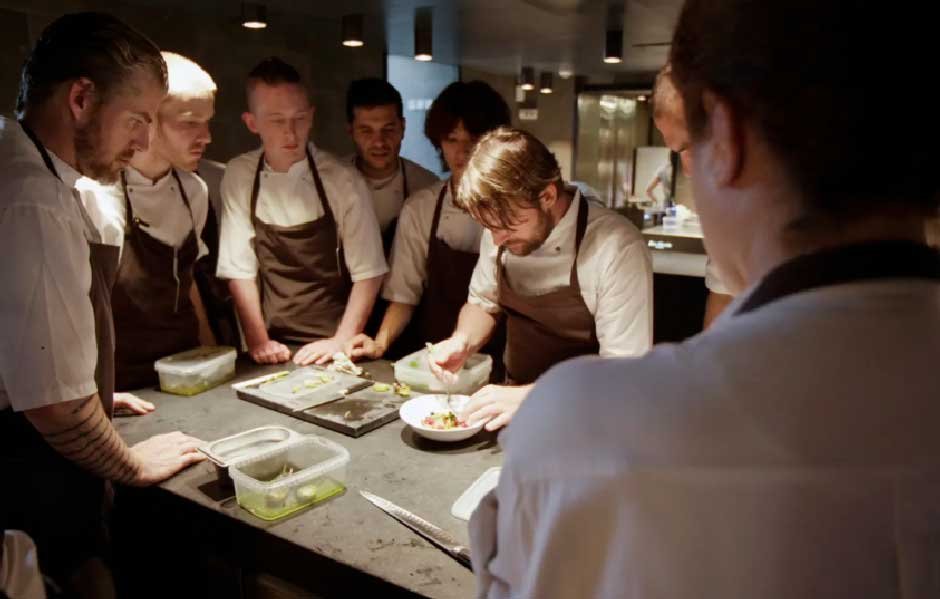Skip to the good bit
ToggleWhen guests walk into a restaurant, the first impression is shaped by more than just the aroma from the kitchen. The lighting, layout, and energy of the space all play a role, but increasingly, so does the music. What was once an afterthought is now being woven into the creative DNA of hospitality environments, with chefs and restaurant managers taking a hands-on approach to music curation.
It’s not about simply filling silence. It’s about using sound to set the tone, reinforce the brand, and enhance every part of the dining experience. With music for restaurants now commonplace, selecting and managing playlists has become a practical extension of the creative process. From the heat of the kitchen to the tempo of table service, music is becoming an important element in how restaurants operate and express themselves.
Music as Part of the Creative Process
Menus often reflect the chef’s vision for a space. Whether inspired by a region, a memory, or a season, they carry tone and intention. Music adds another layer to that vision, offering an audible counterpart to what is on the plate. It can help define not just what the guest eats, but how the experience feels from start to finish.
Some chefs create playlists that mirror the structure of the service. Early lunch hours might feature lighter, upbeat tracks to complement casual dining, while evenings may transition into slower, more atmospheric selections that support longer meals and relaxed conversation. Others develop seasonal playlists to reflect the mood of the current menu, bringing in warmer textures during winter or sharper, brighter tones in spring.
This attention to music allows the sound environment to reflect the kitchen’s values and style, making it part of the storytelling process.
The Soundtrack Behind the Line
In many kitchens, music is not just for the guests. It is part of the working rhythm. While kitchen crews have long played music informally, many now think more intentionally about how sound affects workflow, morale, and communication.
Pacing matters. A fast playlist can help keep things sharp during a rush, while steady, instrumental tracks might support calm and focus during prep. Instead of leaving music to whoever plugs in their phone first, some chefs now treat it like mise en place, or something to be set and ready before service begins.
This kind of consistency helps the kitchen function as a unit. When the music suits the demands of the shift, it can regulate tempo and reduce the fatigue that builds during long hours. When front-of-house and kitchen are aligned musically, it reinforces a sense of cohesion across the entire space.
A Layer of Guest Experience
Guests may not always notice the music directly, but they respond to it. The right playlist can shape behavior gently, encouraging guests to linger or pick up their pace depending on the context. Music influences how time feels, how welcome a space seems, and even how food is perceived.
For this reason, many restaurants develop different playlists for weekday service, weekend brunch, or peak dinner hours. Others use music to reflect their interior design, choosing tracks that match the visual identity of the space.
What has changed is that music is no longer just background noise. It is part of the atmosphere, considered alongside lighting and decor as a detail that helps shape the entire experience.
Sound as Brand Identity
In multi-location restaurants, hotels, or hospitality groups, music also supports brand identity. A consistent sound profile can help unify different sites while still allowing for subtle regional variation. This approach is especially useful in environments where familiarity and ambiance are part of the brand promise.
Restaurants that focus on a specific culinary identity, whether minimalist Japanese or American comfort food, often bring that same attention to sound. It becomes a kind of signature, something familiar and distinctive that adds to the memory of the visit.
Some brands also use music as part of their outreach, sharing playlists on social media or using them to build community beyond the dining room.
Tools Make It Feasible
The increasing availability of platforms that provide properly licensed music has made thoughtful curation easier. Music can now be scheduled much like staff shifts or prep lists, with moods and volumes adjusted throughout the day. Staff do not need to improvise or manage sound on the fly, which allows for a more consistent and professional result.
This practical side is what makes it possible for chefs and managers to approach music as an operational decision. It does not require technical know-how or a dedicated team. It just needs to be part of the plan.
A Natural Extension of the Menu
Curating a playlist has become as natural as choosing a wine pairing or designing a dish. It reflects the values, energy, and personality of the restaurant.
For chefs and restaurant teams, this means music is no longer something to ignore or delegate. It is something to shape and use with purpose.
Whether during prep, service, or closing, music plays a subtle but important role in how restaurants function and how guests feel. It helps set the pace, hold the mood, and carry the story from one table to the next.







